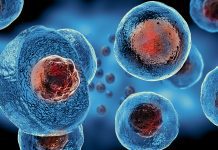
Researchers have discovered which cells help to mitigate damage in Huntington’s disease, which could inform treatments to reduce neurological damage.
Dr Juan Botas, from Baylor College of Medicine, and his colleagues investigated what causes the loss of communication, or synapses, between neurons in Huntington’s disease (HD). They determined that glia cells play a crucial role in mitigating neurological damage caused by the disease.
The findings from the study have been published in eLife.
Past research has demonstrated that when neurons die and disrupt the natural flow of information they maintain with other neurons, the brain compensates by redirecting communications through other neuronal networks, which continues until the damage goes beyond compensation. This process of adjustment, or its ability to change or reorganise neural networks, occurs in neurodegenerative conditions such as Alzheimer’s, Parkinson’s, and Huntington’s disease.
As the conditions progress, many genes change the way they are normally expressed, turning some genes up and others down. The challenge for researchers, like Dr Botas, has been to determine which of the gene expression changes are involved in causing the disease and which ones help mitigate the damage, as this may be critical for designing effective therapeutic interventions.
Focusing on glia cells to understand Huntington’s disease
The mutated huntingtin (mHTT) gene is not only present in neurons, but in all the cells in the body, opening the possibility that other cell types also could be involved in the condition.
Dr Juan Botas, Professor of molecular and human genetics and of molecular and cellular biology at Baylor and a member of the Jan and Dan Duncan Neurological Research Institute at Texas Children’s Hospital, said: “In this study we focused on glia cells, which are a type of brain cell that is just as important as neurons to neuronal communication.
“We thought that glia might be playing a role in either contributing or compensating for the damage observed in Huntington’s disease.”
Initially thought to be little more than housekeeping cells, glia turned out to have more direct roles in promoting normal neuronal and synaptic function.
In previous work, Botas and his colleagues studied a fruit fly model of HD that expresses the human mutant mHTT gene in neurons, to understand which of the many gene expression changes that occur in HD are causing disease and which ones are compensatory.
“One class of compensatory changes affected genes involved in synaptic function. Could glia be involved?” Botas said.
“To answer this question, we created fruit flies that express mHTT only in glia, only in neurons, or in both cell types.”
Differences in gene expression
The researchers began their investigation by comparing the changes in gene expression present in the brains of healthy humans with those in human HD subjects and in HD mouse and fruit fly models. They identified many genes whose expression changed in the same direction across all three species, but an important discovery was that having HD reduces the expression of glial cell genes that contribute to maintaining neuronal connections.
“To investigate whether the reduction of expression of these genes in glia either helped with disease progression or with mitigation, we manipulated each gene either in neurons, glial cells, or both cell types in the HD fruit fly model. Then we determined the effect of the gene expression change on the function of the flies’ nervous system,” Botas said.
They evaluated the flies’ nervous system health with a high-throughput automated system that assessed locomotor behaviour quantitatively. The system filmed the flies as they naturally climbed up a tube. Healthy flies readily climb, but when their ability to move is compromised, the flies have a hard time climbing. The researchers looked at how the flies move because one of the characteristics of HD is progressive disruption of normal body movements.
Turning down glial genes
The results revealed that, for those with HD, turning down glial genes involved in synaptic assembly and maintenance is protective.
Fruit flies with the mutant mHTT gene in their glial cells, in which the researchers had deliberately turned down synaptic genes, climbed up the tube better than flies in which the synaptic genes were not dialled down.
“Our study reveals that glia affected by HD respond by tuning down synapse genes, which has a protective effect,” Botas said.
“Some gene expression changes in HD promote disease progression, but other changes in gene expression are protective. Our findings suggest that antagonising all disease-associated alterations, for example using drugs to modify gene expression profiles, may oppose the brain’s efforts to protect itself from this devastating disease. We propose that researchers studying neurological disorders could deepen their analyses by including glia in their investigations.”







